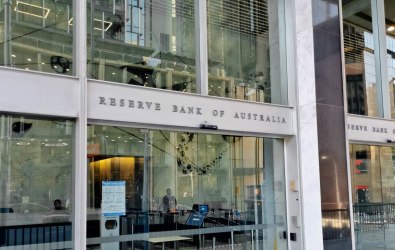The oft-maligned listed investment company (LIC) sector is holding up better than expected during the global share market correction. LICs traded at an average discount of 5.9 per cent to their pre-tax net tangible assets (NTA) on a sector-weighted basis in July, Australian Securities Exchange (ASX) figures show.
That was the smallest discount since January this year, a surprising result given market volatility during that period.
The sector-weighted average considers the LIC's size rather than treat LICs equally, which is important given a handful of LICs dominate the sector by market capitalisation.
On an unweighted basis, the sector traded at an average 8.8 per cent discount to NTA in July, which was the best result since April and the third best result this calendar year.
Large, persistent discounts to NTA have been a problem for many LICs and a reason some investors avoid the sector.
Latest ASX figures do not cover heavy share market falls this month and a widening of the average discount to NTA in August is likely.
And averages can deceive if a handful of LICs trading at big premiums to their NTA bring down the average discount. The majority of LICs traded at a discount in July, which some investors regard as a considerable weakness and others as an opportunity to buy assets at substantial discounts.
To get a clearer picture, Investor Weekly analysed the average sector discount to pre-tax NTA over five years, using July each year as the reference point.
The average sector discount of 8.8 per cent in July 2011 compares to 16.5 per cent in 2010, 15.4 per cent in 2009, 14.8 per cent in 2008 and a 6 per cent discount in 2007, just before the share market peaked that year.
Several factors explain a narrower average LIC discount over that period. First, the sector is coming off a low base after many LICs were smashed during the global financial crisis in 2008-09.
Second, changes to the Corporations Act in June 2010, which allow companies to pay dividends as long as they are solvent, and financial planning reforms that ban new commissions on managed funds from July next year boosted the sector.
Less certainty over dividend payments and the lack of trailing commissions created a huge disadvantage for LICs relative to other investment products.
Other factors are at play. Booming interest in exchange-traded funds (ETF) may help, rather than hinder, larger LICs that offer some active management at fees comparable or even below many ETFs.
One theory is that more investors will use ETFs for passive management and lower-cost large LICs for active management in their portfolio core, with higher-fee, more actively managed investment products as satellites.
Growth in self-managed super funds may also help the LIC sector if more trustees favour lower-cost products.
An increase in average dividends this financial year as more companies engage in capital-management activity to boost total returns could also help larger LICs.
The big question is whether the narrower average discount in the LIC sector can hold during the global share market rout in August and if the sector's recent momentum can continue.





